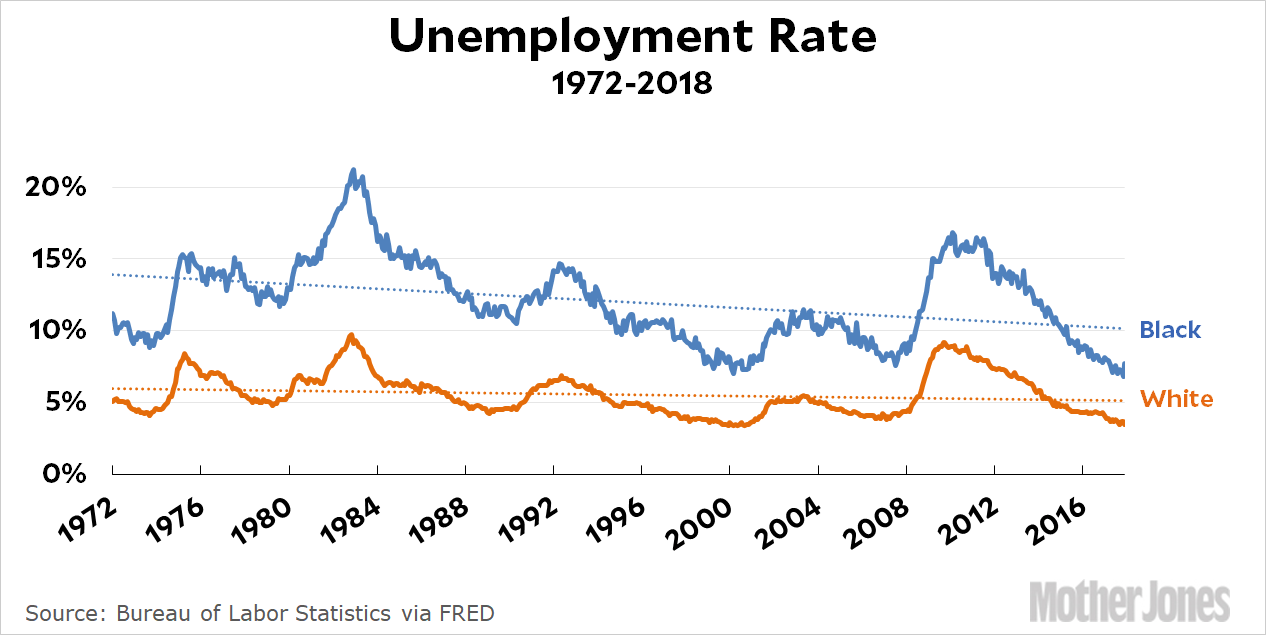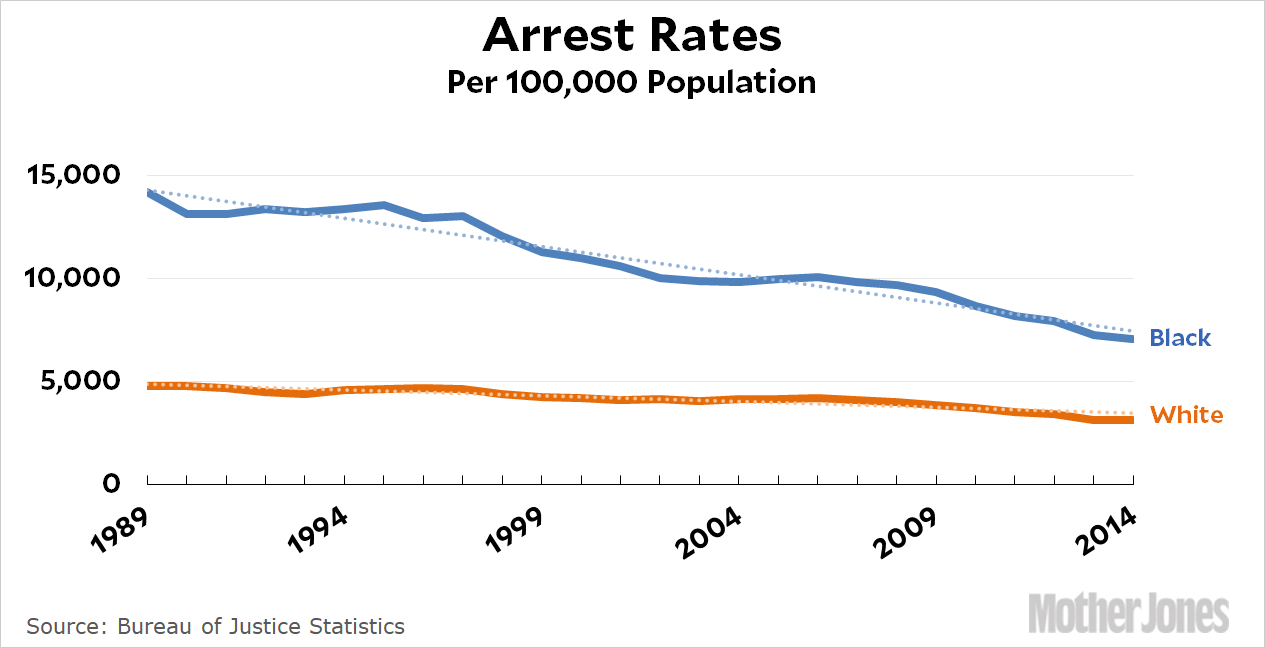The Economic Policy Institute says today that “African Americans are better off in many ways” compared to 1968, but:
With respect to homeownership, unemployment, and incarceration, America has failed to deliver any progress for African Americans over the last five decades. In these areas, their situation has either failed to improve relative to whites or has worsened. In 2017 the black unemployment rate was 7.5 percent, up from 6.7 percent in 1968, and is still roughly twice the white unemployment rate. In 2015, the black homeownership rate was just over 40 percent, virtually unchanged since 1968, and trailing a full 30 points behind the white homeownership rate, which saw modest gains over the same period. And the share of African Americans in prison or jail almost tripled between 1968 and 2016 and is currently more than six times the white incarceration rate.
Homeownership rates have been flat for just about everyone, so it’s fair to say that blacks have seen no progress relative to whites on that front. But the other two items aren’t really right, and I hate to give in to the kind of defeatism that suggests not only that things are still bad for blacks, but that we haven’t even made any progress. Here’s the unemployment rate since 1972, when BLS started keeping separate statistics for blacks and whites:

Unemployment is cyclical, and if you cherry-pick any given pair of years you can make any point you want. But if you look at the entire series for the past few decades, there’s no question that blacks are making up ground. The trendline for whites has barely budged, while it’s gone down by about four points for blacks.
On the crime front, black incarceration rates continue to be a disgrace, but we are making progress. The best way to see this is to look at prison admissions rates. The Bureau of Justice Statistics was happy to show this to us in the past, but they’re hellbent on keeping it a secret lately. However, they slipped up in 2012, so we have at least one data point to compare to the past—and it’s way down from its peak in the late 80s. More recently, we have data for total incarceration rates, and it’s declining at a much faster rate than white imprisonment:

What’s more, arrest rates have also fallen dramatically for blacks. Since their peak in 1989, the arrest rate for blacks has fallen by 50 percent compared to 35 percent for whites:

The continuing racial gap in our justice system, our economic system, and our educational system is something that none of us should put up with. But it’s equally important to know that progress can be made, and the best evidence of this is that progress has been made.













